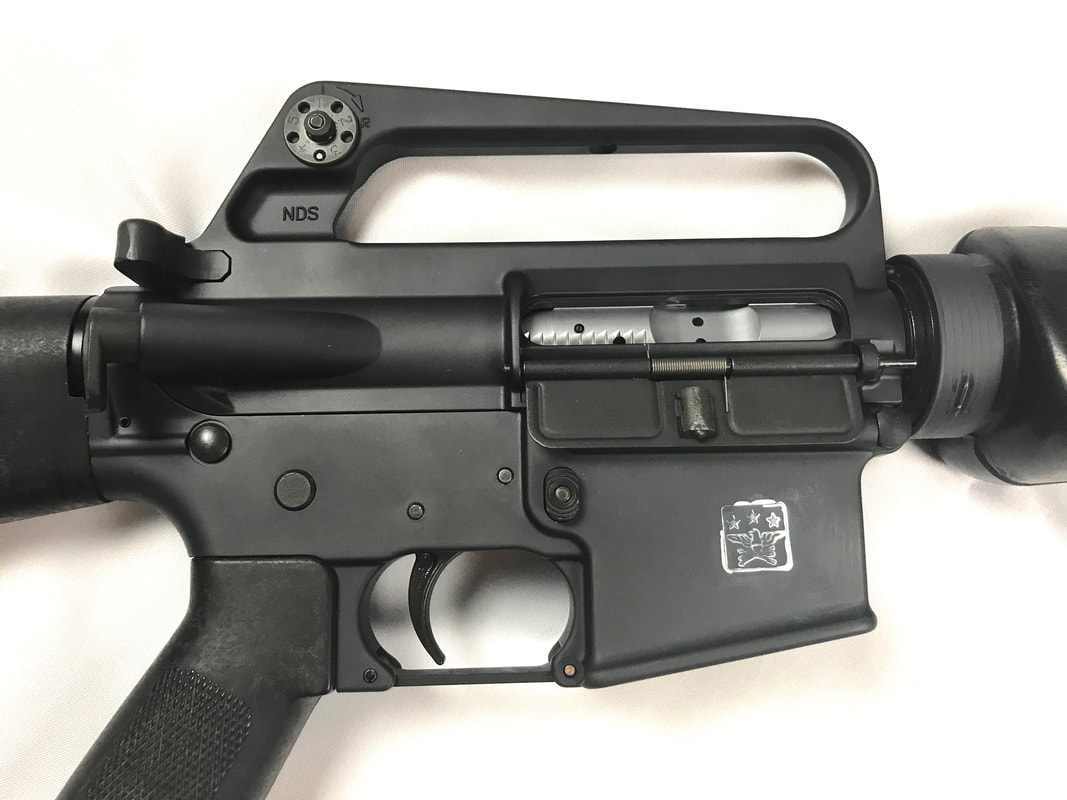 On this day (14 November) in 1965 elements of the United States Army's 1st Cavalry division conducted the first large scale helicopter air assault in history by landing in the Ia Drang valley in the central highlands South Vietnam. Their goal was to fix in place and destroy North Vietnamese Army regiments believed to be in the area. This air assault operation demonstrated both the strengths and weaknesses of airmobile troops. First and foremost it allowed forces to rapidly attack in sizable numbers, in unexpected areas, and with only a few minutes warning before the enemy (hopefully) found themselves vertically enveloped. On the other hand it often placed troopers far from friendly supporting units, required forces to be relatively lightly equipped, and made them dependent on an aerial lifeline that is subject to interference from the enemy, weather conditions, breakdowns, etc. As dramatized in the movie We Were Soldiers (which itself drew from the book by Hal Moore, then the Battalion Commander of 1st Battalion, 7th Cavalry) the troopers found themselves engaged with a superior-in-numbers enemy force that was bent on their destruction. Over the course of three days the troopers fought back ferocious enemy assaults. By November 16th the NVA forces were unable to continue the battle after suffering enormous casualties. The movie ends (after a cinematic final assault that didn't actually happen) with the withdrawal of the bloodied but unbroken 1/7 Cav from the battlefield. Unfortunately in reality it didn't end there, and other American units in the area continued to suffer casualties, including 2/7 Cav which was badly mauled in an ambush while moving to a new landing zone for extraction. I have a very small personal connection to this event, as the college I attended was formerly the Pennsylvania Military College (PMC). Among many notable graduates was John "Jack" Geoghegan, who was assigned as a platoon leader in 1/7 Cav. During the second day of the battle 2LT Geoghegan was killed while trying to rescue one of his wounded Soldiers from enemy fire. For his actions he was posthumously awarded the Silver Star. As shown in the movie, Jack left behind his wife Barbara and his 5 month old baby. I had the great privilege to briefly correspond with Barbara a number of years ago, something I will always remember. The most prevalent weapon in the hands of the men of the 7th Cavalry that day was the XM16E1. The XM designates that this was still an "experimental" weapon undergoing field testing before official adoption as a standard army-wide weapon. While other units were still using the M-14, the 101st Airborne, 82nd Airborne and 7th Cavalry were given XM16E1s in order to evaluate their effectiveness in the field (because let's be real, the prior Air Force use of the M16 didn't exactly run it through the ringer as much as the Army / Marines were sure to do). Such field testing is a pretty normal process, but the wisdom of doing during the middle of an ongoing conflict is definitely up for debate. Pretty quickly there were problems, the most notable of which were catastrophic stoppages (typically failures to eject) that left the weapons useless. This led to deaths, ordnance reports, and congressional investigations. The most pointed to cause was a change to a gunpowder that left behind significant fouling, as well as insufficient cleaning kits and poor maintenance training. Other smaller issues included the pronged flash suppressor catching brush, the magazine release not being sufficiently protected, and poor bore corrosion resistance. Throughout the course of the test period the XM16E1 was tweaked and tweaked again until the end product was officially accepted as the M16A1 in 1967. By that point it was a pretty darn good weapon, had the vast majority of issues worked out, and was ready to begin its still open-ended service life. But the publicity and morale damage was already done, and the M16 family still suffers from residual bad feelings -- particularly from those who came of age during Vietnam. This particular rifle is a retro reproduction rifle from Brownells, built to resemble the XM16E1 (and sadly not full auto... ). The main guts are all new production, while the furniture and some small exterior parts are original period items. It features some of the key early features, such as the 3-prong flash hider, stock without a trapdoor, a "partial fence" on the lower receiver, and chromed bolt carrier. It is a fantastic rifle, and I encourage anyone with a soft-spot for full length ARs to check out Brownell's retro offerings!
1 Comment
ALLEN CHILDERS
3/28/2023 02:15:10 pm
'' BRAVE SOLDIERS AND THE M16 BROUGHT THIS VICTORY ''
Reply
Leave a Reply. |
Jon K.Weapons collector, history buff, Army officer, Pug enthusiast. Archives
December 2020
Categories
All
|










 RSS Feed
RSS Feed
